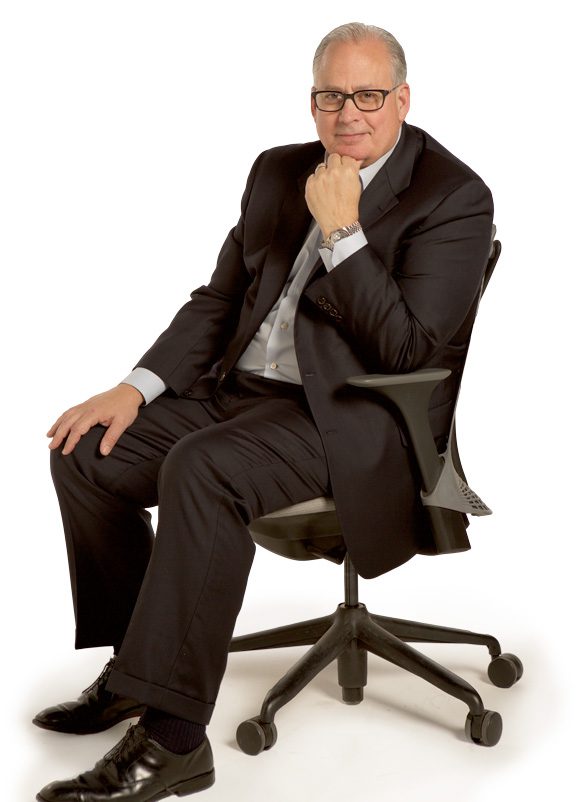
Steve Bradshaw is president and CEO of BOK Financial Corporation. Based in Tulsa, BOK Financial provides commercial and consumer banking, investment and trust services, mortgage origination and servicing and the TransFund electronic funds transfer network. He took the position in January.
Bradshaw joined BOK Financial in 1991 and became president of BancOklahoma Investment Center and BOSC Inc. He then served as senior vice president/private financial services manager responsible for a sales, marketing, and support unit comprised of private banking, personal trust and estates, retail brokerage, insurance services, fiduciary tax, real estate and minerals management.
Bradshaw earned his bachelor’s degree in business finance from the University of Central Oklahoma and graduated with distinction from the Southwestern Graduate School of Banking at Southern Methodist University in Dallas.
Bradshaw currently serves on the board of the Tulsa Regional Chamber and is former chairman of Visit Tulsa, the chamber’s convention and visitor’s bureau. Bradshaw is a past board member of the Tulsa Community Foundation, Tulsa River Parks Authority, the Metropolitan Tulsa Urban League, YWCA Tulsa, Tulsa Habitat for Humanity, Domestic Violence Intervention Services and Junior Achievement of Oklahoma.
What makes Bank of Oklahoma a great place to work?
Our people. Every company says they have the best people, but we really do. Our business strategy relies heavily on teamwork and collaboration, and to do those well you have to have the best talent. We attract people who like to come together to solve problems and provide solutions for customers. Accomplishing goals as a team and enjoying the people you work with every day results in a very engaged and forward thinking workforce.
What are examples of programs and incentives that employees at BOK are offered?
We have employee development programs at virtually every level of the company. It starts with an expectation for managers to identify development opportunities jointly with their employees and commit to a plan of action to accomplish it. We want to see employees competing effectively for more responsibility and moving easily between departments and even geography. Some of our most successful programs bring groups of employees with diverse backgrounds together to work on a large corporate project. These could include improving aspects of the company and the work environment, invigorating an existing business or product, compelling the creation of a new business or product or providing feedback to executive management on priorities within the company. We encourage open dialogue, which translates into action and accountability.
We encourage our employees to actively participate in the community, and I think that’s something that makes us stand out. It’s a selling point for our recruiters as they talk to potential new hires, and something our current employees feel pride and fulfillment in.
How have BOK employees made the most of the encouragement and these programs?
There are so many great examples of employees who’ve worked for the company a long time and have made good careers for themselves, and who have made positive impacts for the company. We have a very successful management training program for new college graduates called Accelerated Career Track (ACT). It’s a great way to engage new employees in our organization, give them broad experience across the company and then place them in positions that best fit their abilities and potential career path. There are a number of examples of ACT grads moving up and around in the company. For example, our OKC bank CEO, Marc Maun, is an ACT graduate who started in Tulsa and has held a number of roles over the years in Tulsa, Kansas City and now Oklahoma City. Mickey Coats heads up energy banking for the corporation, and he’s an ACT grad. And the list goes on and on.
I think the ability to move up and around within the company is a very compelling benefit we offer our employees. I joined the bank in 1991 when it purchased my small investment firm. At that time, Scott Grauer, who today leads all our wealth management business, worked for me and came to BOK Financial with me. Today I’m in my role, and he’s on the executive leadership team. That’s the kind of opportunity you find here at BOK Financial.

What is most important in promoting a positive corporate culture?
A positive attitude. It’s important that we never lose sight of our obligations to customers and the desire to fulfill their expectations. I enjoy celebrating the many successes our employees have every day in delighting customers, both internally and externally. It’s the best part of my job.
How would you characterize your own management style?
It’s hard to attribute a style to yourself; that’s probably a better question for others. I’m a positive, forward-thinking person. It’s important to have a leadership team that is diverse in terms of style and thought process. It’s my job to make sure that the team collaborates well and produces optimal results. And then stay out of the way when they do.
What advice would you give to someone who is beginning to climb the ladder in corporate management?
Take some risk. Don’t predispose your career path. No career progresses at the exact pace and direction that one anticipates. When you see an opportunity to learn something new and improve results, jump on it. Otherwise, you will limit your potential and value to yourself and your company.
In what ways do you encourage communication between employees and managers in such a large corporation?
I try to set a strong example. It starts with clear communication around goals and vision with my direct reports and setting expectation or how we will work together, solve problems and make decisions. Then working to cascade those goals and vision to our nearly 5,000 employees. We try many different ways to do that, including small employee group meetings, large scale regional meetings, videos, emails and more. Effectively communicating who we are, what our values and priorities are and what needs to be accomplished to continue to improve and enhance the workplace for employees is critical to keeping and attracting the best talent, which we strongly believe we have at our company today.























